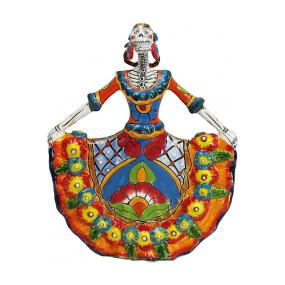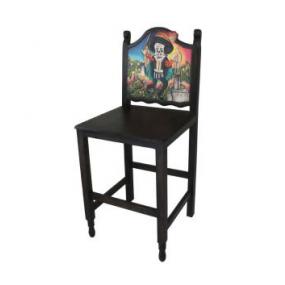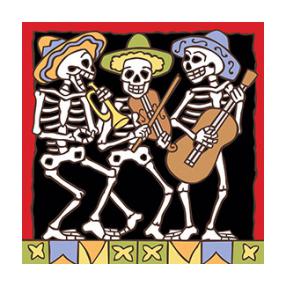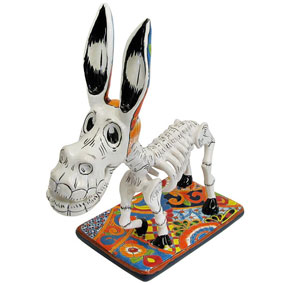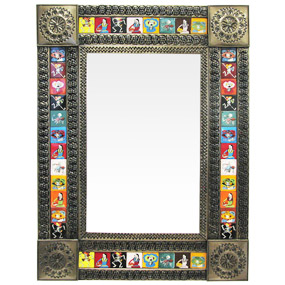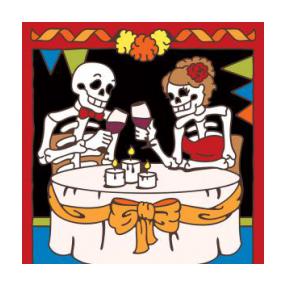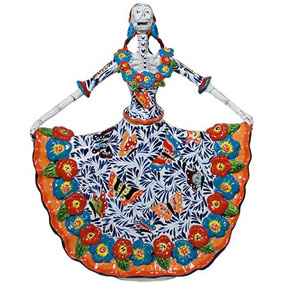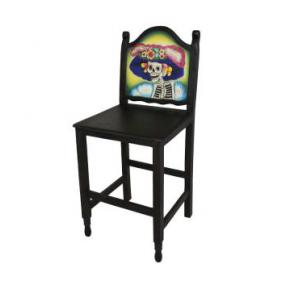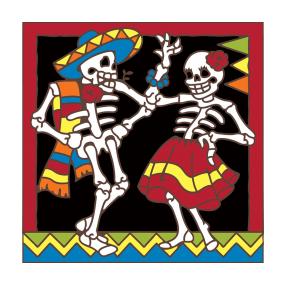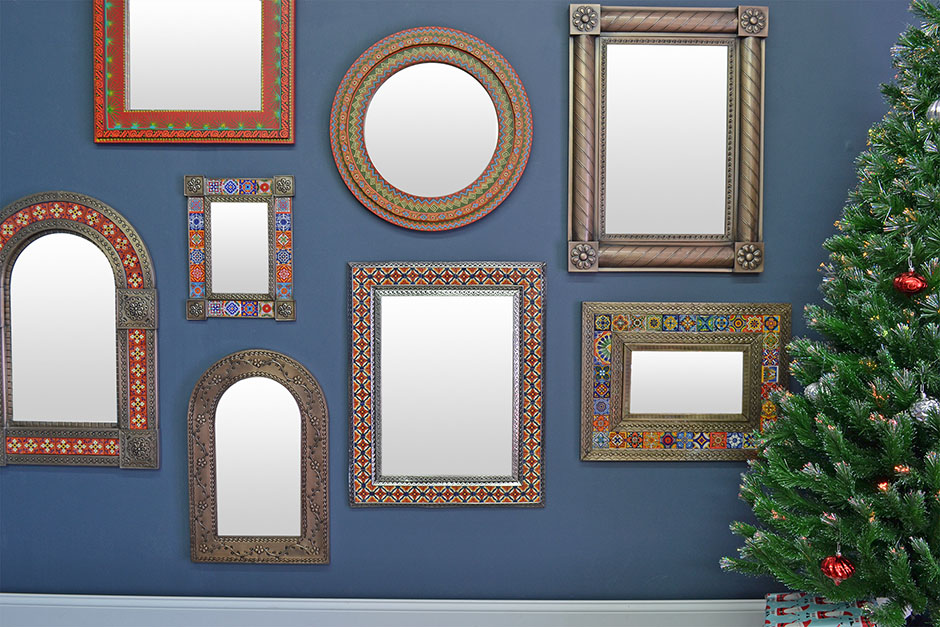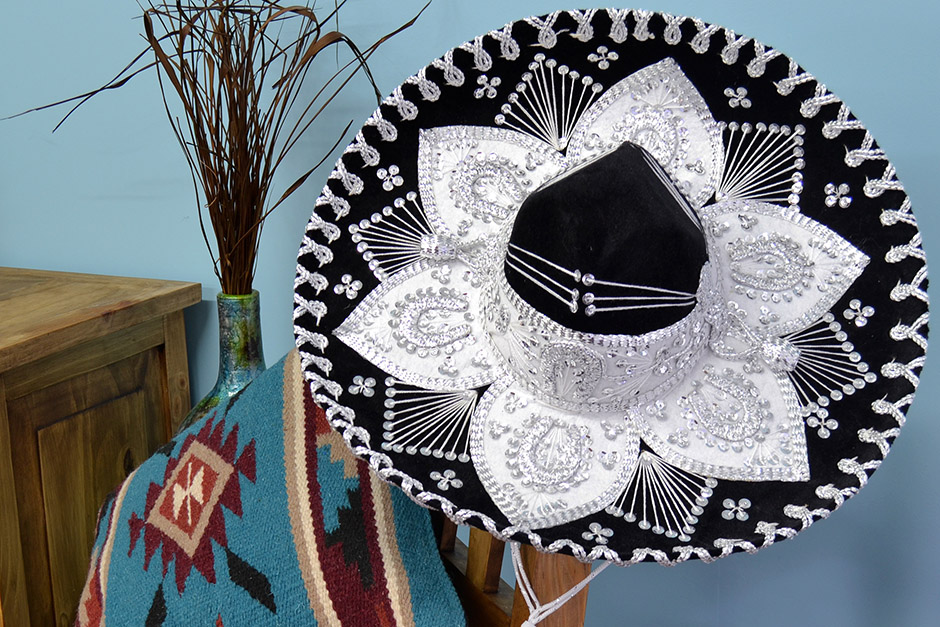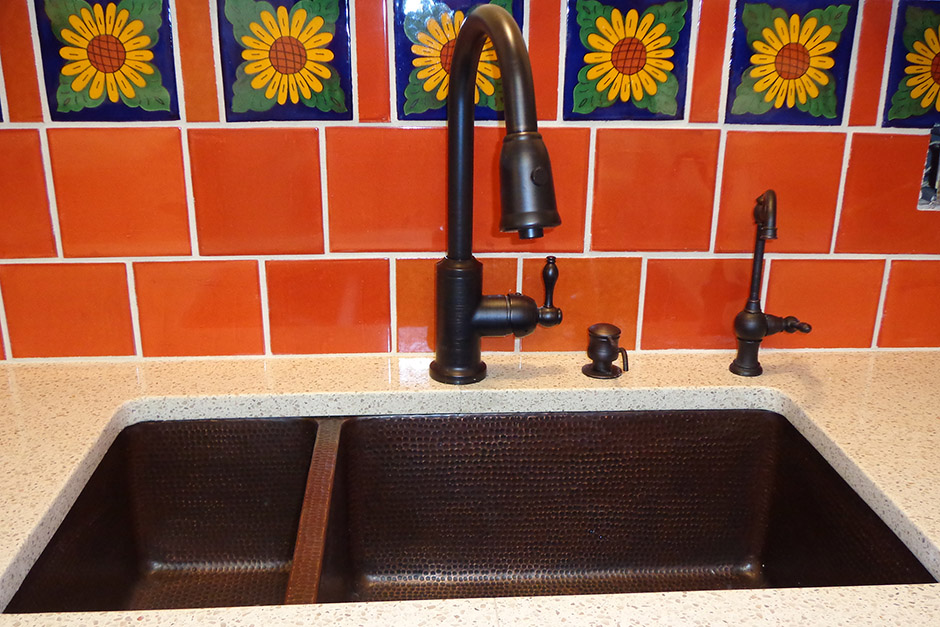Behind the Design
10 Facts about Day of the Dead
October 29, 2014
10 Facts about Day of the Dead celebrations in Mexico -- This Mexican tradition takes place on November 1st and 2nd each year. It is such a special piece of Mexican culture that it is considered a National Holiday. The celebration of the Dia de los Muertos (aka Day of the Dead) in Mexico is not scary, sad or ugly. Families use it to remember their beloved relatives that have died.
1. - This tradition is about celebrating the dead as part of life.
The belief behind the Day of the Dead is that spirits return to earth for one day each year to be with their families. In preparation for that, people gather special offerings to receive the spirits at their homes and cemeteries with altars and decorations.
2. - It's a mix between Aztec and Catholic rituals.
More than 500 years ago, when the Spanish/Catholic conquistadors came to Mexico, they encountered natives practicing a ritual to honor the dead that seemed to be sacrilegious. They attempted to convert them to Catholicism and tried to kill this 3,000 year old Aztec ritual, but it didn't work. So instead the Spaniards decided to "keep it" and to transform it, so it would coincide with All Saints' and All Souls' Catholic celebrations.
3. - The celebration of Dia de los Muertos lasts for 2 days: one is for dead kids and the other one for dead adults.
Even though it is called "Day of the Dead", the celebration takes place over two full days. Dead children are remembered on November 1st, and dead adults are celebrated the following day
4. - The common symbol of the holiday is the skull, , known as Calavera in in Spanish.
In the pre-Hispanic era, it was common to keep skulls as trophies to symbolize death and rebirth. This symbol remains in the celebration with sugar skull, inside the altars, as well as other various types of colorful Mexican artwork involving the skull
5. - The traditions and activities vary across the country.
Festivities celebrating the dead could be different from town to town. They tend to be more colorful in the south of Mexico, particularly in Michuacan, Oaxaca, , Estado de Mexico, Yucatan and Aguascalientes.
6. - Altars are offerings to welcome an individual spirit for the day.
Ofrendas are set up on colorful decorated tables at home. They will include the decedent's favorite foods and drinks and any other personal stuff that can help the soul to find his/her way to the altar. Other traditional objects could be candles, incense, yellow flowers with a strong smell, as well as bread and sugar skulls. There are places in Mexico where families set their altars at the cemeteries and spend the night there waiting for their loved ones souls.
7. - Day of the Dead and Halloween are two different things.
Death is something to be feared during Halloween festivities, but in Day of the Dead, , death - or at least the memories of those who have died – is something to be celebrated.
8. - The Bread of the Dead (Pan de Muerto) is a traditional type of bread that is baked only during this time in Mexico.
Pan de Muerto is a sweetened soft bread shaped like a bun, often decorated with bone-like pieces that represents sorrow.
9. - The "Calaveras" inside newspapers are pieces of popular literature published during the day of the dead to criticize politicians or public individuals.
Calaveras refers to imaginary obituaries of famous people which appear in newspapers all over Mexico, to humorously criticize individuals that are very much alive.
10.- It's a tradition that teaches heritage to new generations.
The essence of this beautiful ritual is to lovingly and happily remember people's dead relatives. It is a way for the younger generations to learn some history about their ancestors. The Day of the Dead brings unity, identity, and pride to families all over Mexico.
Let's Get Social - Join La Fuente Imports for interior design inspiration on Facebook, Pinterest, Instagram, Twitter and Houzz.

